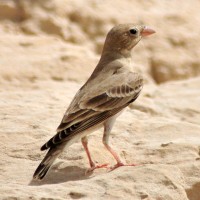Descripción
Where the Talish Mountains meet the Caspian Sea the natural highlights include the spectacular Hirkan Forest, myriad hot springs, black-sand beaches and, yes, great birdwatching! The most interesting species living here are the very localised poelzami subspecies of Pico Picapinos, Shikra, Caspian Tit and in winter Zorzal papinegro from Siberia, mostly found near the popular restaurant Tabassum on the road from Lankaran city to the hilltop town of Lerik.
Up there, in the hillside bushland and forest near the treeline, is the only place in Europe inhabited by the elusive Caspian Tit, which was only rediscovered by a British birder in 2017 having not been seen for decades. Similarly, the Shikra, another speciality to the region similar to a Gavilán Común, was spotted in 2008 for the first time since 1968, though today birdwatching groups have an excellent chance of seeing them in the lush roadside parks and gardens in Masalli.
Beyond Lerik a delightful country road passes through lush meadows and a dramatic canyon before entering an expanse of semi-arid highland scattered with thorny bushes and small oases of luxuriant forest. Here, in the Zuvand highlands, you may encounter species otherwise limited to the exclave of Nakhchivan like Petirrojo de Irán, Calandria Bimaculada, Pale Rockfinch and Camachuelo Alirrojo. Other birds you can encounter are Papamoscas Acollarado, Radde's Accentor, Camachuelo Trompetero, Escribano Cabecigrís, Águila Real, Collalba Rubia and Escribano Montesino.
Detalles
Accesso
There are several birdwatching sites home to exclusive bird species in the Talish Mountains, which cover large parts of Azerbaijan’s south-eastern corridor and straddle the border with Iran. Lower down the climate is subtropical and much of the region is covered by the Hirkan Forest, an internationally significant refuge of tertiary relict flora including many endemic tree species as well as creeks, rivers and waterfalls which is protected by the Hirkan National Park.
When to visit: The Shikras seem to arrive in late April so the best time to see them is May and June. That is a good time also for songbirds like flycatchers and warblers, and visiting the Zuvand highland. Black-throated Thrush and spectacular snow-powdered scenery can be seen from mid-November until early March. The Caspian Tit seems to be present all year but is best seen in spring and late autumn.
Terreno y habitat
Montaña , Estepa , Pradera , Árboles y arbustos dispersosCondiciones
Montañoso , Montañoso , SecoCamino circular
Sí¿Se necesita telescopio?
Puede ser útilBuena época para el avistamiento de aves
Todo el añoMejor momento para visitar
Primavera , OtoñoRuta
Camino pavimentado , Camino estrechoCamino difícil de andar
AgotadorAccesible vía
Coche , A pieEscondite de observación / plataforma
NoInformación extra
The hilltop town of Lerik is home to one of Azerbaijan’s most unique museums: the Museum of Longevity, which celebrates the region’s remarkable number of centenarians, whose longevity is thought to be down to the pure air, water, nature and produce. Two waterfalls, Galabin and Gunashli, accessible by hiking, are impressive natural attractions of the Lerik region. Another is the Gateway to the Mountains canyon, containing a number of caves that were inhabited by ancient humans.
Sleeping: Lankaran city has a good selection of hotels and guest houses to suit all budgets located in the city centre, by the sea or nearer the mountains. Masalli Hotel is a comfortable option very close to Gizil Aghaj NP.
Eating: The south-eastern corner of Azerbaijan is renowned for its local cuisine. Be sure to try lavangiroast chicken or fish stuffed with a walnut and plum paste and pumpkin pilaf. There are some excellent garden restaurants lining country roads throughout the region, while Lankaran city has many eateries serving local and international cuisine. The region is also the centre of tea and citrus fruit growing in Azerbaijan.





